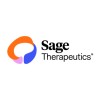A Study to Evaluate SAGE-217 for Prevention of Relapse in Adult Participants With Major Depressive Disorder
Major Depressive Disorder

About this trial
This is an interventional treatment trial for Major Depressive Disorder focused on measuring MDD, SAGE-217
Eligibility Criteria
Inclusion Criteria:
- Participant had a diagnosis of MDD as diagnosed by Structured Clinical Interview for Diagnostic and DSM-5 Clinical Trial Version (SCID-5-CT), with symptoms that had been present for at least a 4-week period.
- Participant had at least 1 prior major depressive episode (MDE) in the 5 years prior to Screening (not including the current episode).
- Participant was willing to delay the start of any antidepressant, anxiolytic, insomnia, psychostimulant, prescription opioid regimens, and new psychotherapy (including Cognitive Behavioral Therapy for Insomnia [CBT-I]) until after study completion.
Exclusion Criteria:
- Participant had attempted suicide associated with the current episode of MDD.
- Participant had treatment-resistant depression, defined as persistent depressive symptoms despite treatment with adequate doses of antidepressants within the current major depressive episode (excluding antipsychotics) from two different classes for at least 4 weeks of treatment. Massachusetts General Hospital Antidepressant Treatment Response Questionnaire (MGH ATRQ) was used for this purpose.
- Participant had a positive pregnancy test at screening or on Day 1 prior to dosing.
Sites / Locations
- Sage Investigational Site
- Sage Investigational Site
- Sage Investigational Site
- Sage Investigational Site
- Sage Investigational Site
- Sage Investigational Site
- Sage Investigational Site
- Sage Investigational Site
- Sage Investigational Site
- Sage Investigational Site
- Sage Investigational Site
- Sage Investigational Site
- Sage Investigational Site
- Sage Investigational Site
- Sage Investigational Site
- Sage Investigational Site
- Sage Investigational Site
- Sage Investigational Site
- Sage Investigational Site
- Sage Investigational Site
- Sage Investigational Site
- Sage Investigational Site
- Sage Investigational Site
- Sage Investigational Site
- Sage Investigational Site
- Sage Investigational Site
- Sage Investigational Site
- Sage Investigational Site
- Sage Investigational Site
- Sage Investigational Site
- Sage Investigational Site
- Sage Investigational Site
- Sage Investigational Site
- Sage Investigational Site
- Sage Investigational Site
- Sage Investigational Site
- Sage Investigational Site
- Sage Investigational Site
- Sage Investigational Site
- Sage Investigational Site
- Sage Investigational Site
- Sage Investigational Site
- Sage Investigational Site
- Sage Investigational Site
- Sage Investigational Site
- Sage Investigational Site
Arms of the Study
Arm 1
Arm 2
Arm 3
Experimental
Placebo Comparator
Experimental
Open-Label Phase: SAGE-217
Double-Blind Phase: Placebo
Double-Blind Phase: SAGE-217
Participants self-administered SAGE-217, 30 milligrams (mg), oral capsule, once daily (QD) in the evening from Day 1 to Day 14.
Following the OL Phase, participants who exhibited a Hamilton Rating Scale for Depression (HAM-D) response, defined as a greater than or equal to (≥) 50% reduction from baseline in HAM-D total score were to be randomized to receive SAGE-217 matching placebo capsule, orally, QD, in the evening, in a total of five, 14-day treatment periods, each separated by a 6-week follow-up period during the 40-week DB Phase of the study. However, no participants were randomized to receive SAGE-217 matching placebo due to early study termination.
Following the OL Phase, participants who exhibited a HAM-D response defined as a ≥ 50% reduction from baseline in HAM-D total score to SAGE-217 were randomized to receive SAGE-217, 30 mg, oral capsule, QD, in the evening, up to study termination date (i.e., up to approximately 22 weeks) during the DB Phase of the study.
Outcomes
Primary Outcome Measures
Secondary Outcome Measures
Full Information
1. Study Identification
2. Study Status
3. Sponsor/Collaborators
4. Oversight
5. Study Description
6. Conditions and Keywords
7. Study Design
8. Arms, Groups, and Interventions
10. Eligibility
12. IPD Sharing Statement
Learn more about this trial
